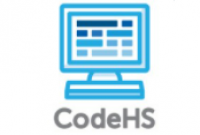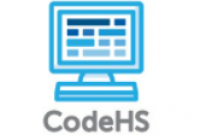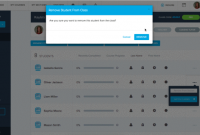With CodeHS Pro, you are able to reset students’ code and quiz scores through the CodeHS Gradebook. By the way, how to undo or reset student code in codeHS? Well, find out that answer by reading this entire article. Also, here we are going to share some information related to CodeHS.
Resetting Student Code
Here are steps to reset student code from the Gradebook:
- At the first step, you have to go to the Gradebook.
- After that, you are able to click on the assignment in the gradebook.
- Then, you have to click “Reset” for one student or all students within the section.
- Please confirm by clicking “Yes”
Besides resetting student code from the Gradebook, you are also able to reset student code in Bulk. Here are steps to reset student code in Bulk:
- In your Assignments page, you have to expand the module and lesson to see an individual activity.
- After that, you are able to click the dark blue Grade Assignment for All Sections button.
- On the assignment page, you need to choose at least one student and click Reset Code.
Resetting Your Code
You are able to reset your own exercises in the CodeHS editor back to the original starter code.
Here are steps to reset your items:
- Firstly, you are able to access the History tab by clicking More > History in the right sidebar.
- Then, you are able to click Reset Code to restore the item to its original state.
- After you have clicked it, you just need to remember to click the Save button.
Deleting a Module, Lesson, or Activity
Now, you are able to delete a module, lesson or assignment through CodeHS Assignments. With several clicks you are able to delete an entire module, lesson or a specific assignment from your course. Remember that after you delete a module, lesson or assignment this action cannot be undone.
Deleting Modules
Here are steps to delete modules:
- To delete a module, firstly you are able to click on your course.
- Then, click on Assignments on the left side navigation panel.
- Next to the Module you are going to see three dots, click on the “…” and choose Remove to delete the entire module from the section.
Deleting Lessons
Here are steps to delete lessons:
- To delete a lesson, you are able to click on the module.
- Then, you have to click “…” next to the lesson.
- After that, simply you are able to click Remove.
Deleting Assignments
Here are steps to delete assignments:
- To delete a specific assignment, you are able to click on the module.
- Click on the lesson, next to the assignment you want to remove click on “…” and choose Remove.
About CodeHS

Some of you may not know about what CodeHS is. Thus, you are also going to explain about codeHS. If you really want to know that information, do not hesitate to read the following text.
Based on the research, CodeHS is an interactive online learning platform that offers computer science and programming instruction for schools and individual learners. Here, CodeHS is focused on spreading access to and knowledge of computer science by offering online instructional materials which are supported by remote tutors. In the introductory learning module, the students on the site will practice computer science concepts and programming skills by giving commands to a dog called Karel.
Similar to the genuine Karel programming language developed by Richard E. Pattis, a dog called Karel must complete various tasks by moving around a grid world, putting down and picking up tennis balls by using only simple commands. The next learning modules will teach more advanced concepts by using languages like Java, JavaScript,and HTML.
History of CodeHS
Historically, CodeHS was built in 2012 by Jeremy Keeshin and Zach Galant. For your information, Jeremy Keeshin and Zach Galant were Stanford University Computer Science graduates. Galant and Keeshin based CodeHS on their own experience as section leaders and teaching assistants for some of Stanford’s introductory computer science courses. This company joined the Imagine K12 incubator’s third class. It was launched in October 2012. Its investors include NewSchools Venture Fund, Kapor Capital, Learn Capital, Seven Peaks Ventures, Imagine K12, Marc Bell Ventures, and Lighter Capital. In total, CodeHS has reached $2.9 million as of December 2016.
We get information that CodeHS was selected as one of three education technology companies to take part in the Innovation Challenge (2013), part of the NBC Education Nation initiative. Innovation Nation challenge participants CodeHS, GigaBryte and Teachley participated in a series of challenges in October 2013, soaring in a live pitch contest broadcast live on NBC during the Education Nation Summit. Eventually, CodeHS won the Innovation Challenge, getting a $75,000 prize awarded by the Robin Hood Foundation.
CodeHS participated in the nationwide Hour of Code challenge promoted by Code.org during the week of December 9, 2013. Also, CodeHS was featured as a tutorial for learning JavaScript on the Computer Science Education Week site. Over the course of the week, the participants started learning to code for an hour on CodeHS.
Apparently, the first learning module on CodeHS teaches introductory programming concepts by asking the students to give basic commands to Karel the Dog using Karel-specific JavaScript commands. Of course, this approach is based on the original Karel programming language developed by Richard E. Pattis. And it is used in Stanford University’s introductory computer science classes.
Initially, Karel knows only several basic commands:
- move(); to ask Karel to move one spot forward.
- turnLeft(); to ask Karel to turn left.
- putBall(); to ask Karel to put down one tennis ball in the current spot.
- takeBall(); to ask Karel to pick up one tennis ball from the current spot.
Need to know that Karel is able to be taught additional commands by defining new functions consisting of these basic commands. Also, the programmers are able to use elements like loops and conditionals to control the flow of the program. After a dog called Karel, then Tracy the turtle was introduced. Eventually, Karel evolves into Superkarel and gets the ability to turnRight() and turnAround().






